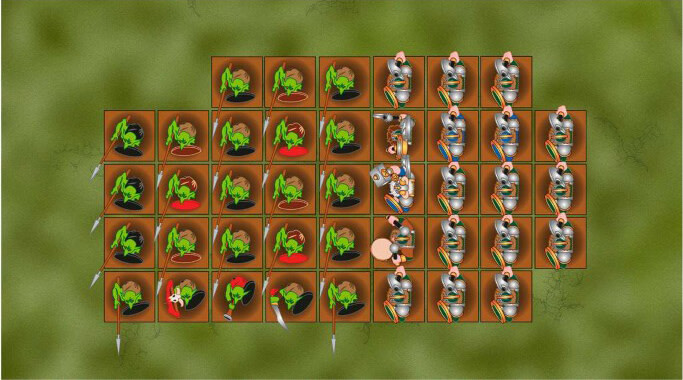If a defeated unit has more ranks than its enemy, it takes a Break test without applying the difference in the Combat Result scores. You should include the front rank for the purposes of determining whether or not a unit is steadfast.
When at war, there's definitely something to be said for having vast numbers at your disposal. Not only will your warriors be worried far less by the odd fallen comrade (there's plenty more where they came from) but they'll also take heart from being more numerous than the enemy. To represent this in our games, we have something called the Steadfast rule.
Simply put, a unit is considered to be steadfast if it has more ranks than its enemy. As with calculating extra ranks for the purposes of Combat Result, the ranks have to be five or more models wide for the unit to be treated as being steadfast. The last rank doesn't have to be complete, but must have at least five models. Similarly, the enemy's ranks also have to be five or more models wide to counter your unit from being steadfast.
Steadfast units don't apply the difference in Combat Result scores to Break tests.
It should be noted that a unit does not lose its steadfast status for being disrupted. A flank charge might be able to disrupt a unit, but it can't prevent the warriors in that unit realising they outnumber the foe.
For example: A unit of Empire Halberdiers is attacked in the rear by a unit of daemonic Bloodletters. Unsurprisingly, the Halberdiers take quite a beating, and end up losing the combat by 7. However, the Bloodletter unit has only 12 models, arranged into two complete ranks and a third rank of 2 Daemons, whilst the Halberdiers still have 30 models left, giving them five ranks of 6 models. As the Halberdiers have more ranks than the Bloodletters, they are Steadfast and will test on their unmodified Leadership of 7.

